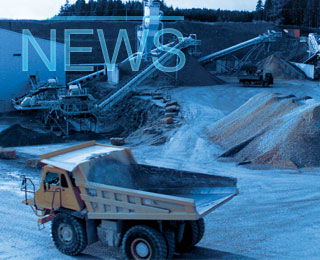According to Mr Mbuvi Ngunze, Managing Director Hima Cement, one of the biggest power consumers in Uganda, electricity power tariff hikes have hit the manufacturing industry hardest. While there is a construction boom at present, from the cement industry perspective, the growth is just average at about 7-8 percent. Its not spiking up like it was running four years ago – he noted.
Since we bought into the business in 1999, we have doubled the capacity, which has also come with efficiency because if you do not manage your costs, you will be out of business very easily. Double capacity means so many things especially in terms of spin-off benefits.
Our financial performance has improved. Being part of Bamburi, which is part of Lafarge, our financial performance is consolidated into the group, but we have been a very strong contributor to the total group results.
Our main competition is Tororo Cement, but we also have some of the other Kenyan manufacturers like East African Portland Cement, which sells Blue Triangle cement. Other competitors are all those manufacturers of building materials.
It is a healthy competition. Tororo is investing in additional capacity which means that as a business, we have to watch their actions keenly because they are investing; we have to be alert on the actions of the competition, and make sure we reduce our own operational costs to survive in a more competitive environment despite our handicap of being so far away from the market which presents a huge challenge.
There are several challenges however. Electricity and fuel are not locally sourced, so we have to transport them over a long distance and then when we are done, we have to transport the cement all the way to Kampala, which is our main market. If I compare myself with our competition, they are on the main electricity line going to Kenya, which is of good quality. When they are importing fuel, they only transport almost two thirds of the distance I transport. So being far from the market is in a way a disadvantage but we must cover those losses by being efficient in everything we do.
About power, there are two parts of the problem especially for us; there was need to upgrade the sub stations on the line leading to Hima, which was finished by December last year, so we have seen an improvement in the power quality that is coming through. But now, the problem is with the transmission line, which is largely wooden, so if a pole falls off, we have a total black out despite the new substation. Unless we get the transmission line done, we will not have a total solution that we require. Lost power means lost production and once you have lost production, you have lost it totally, you cannot gain it.
The government is caught between a rock and a hard place. As a manufacturer, I also see it from the government’s point of view that the power increase is inevitable because we are in a supply gap. The increase will have an impact on the cost of production but I cannot tell you right now what will be the impact on the consumer because this is the first month. Electricity is about 22-25 percent of my cost of production and when 25 percent of your production goes up, then things are bound to change.
Another problem is counterfeiting. We have been working on counterfeit for the last three years. We took one big strategic decision to re-brand our products. We changed the bag design, changed the way we load the bag and today I think the level of counterfeiting at least affecting our product has reduced. We have worked with the Uganda National Bureau of Standards as an industry and the police. I think that strategy worked. (Abstracted from a report in The Monitor by by Muhereza Kyamutetera)
